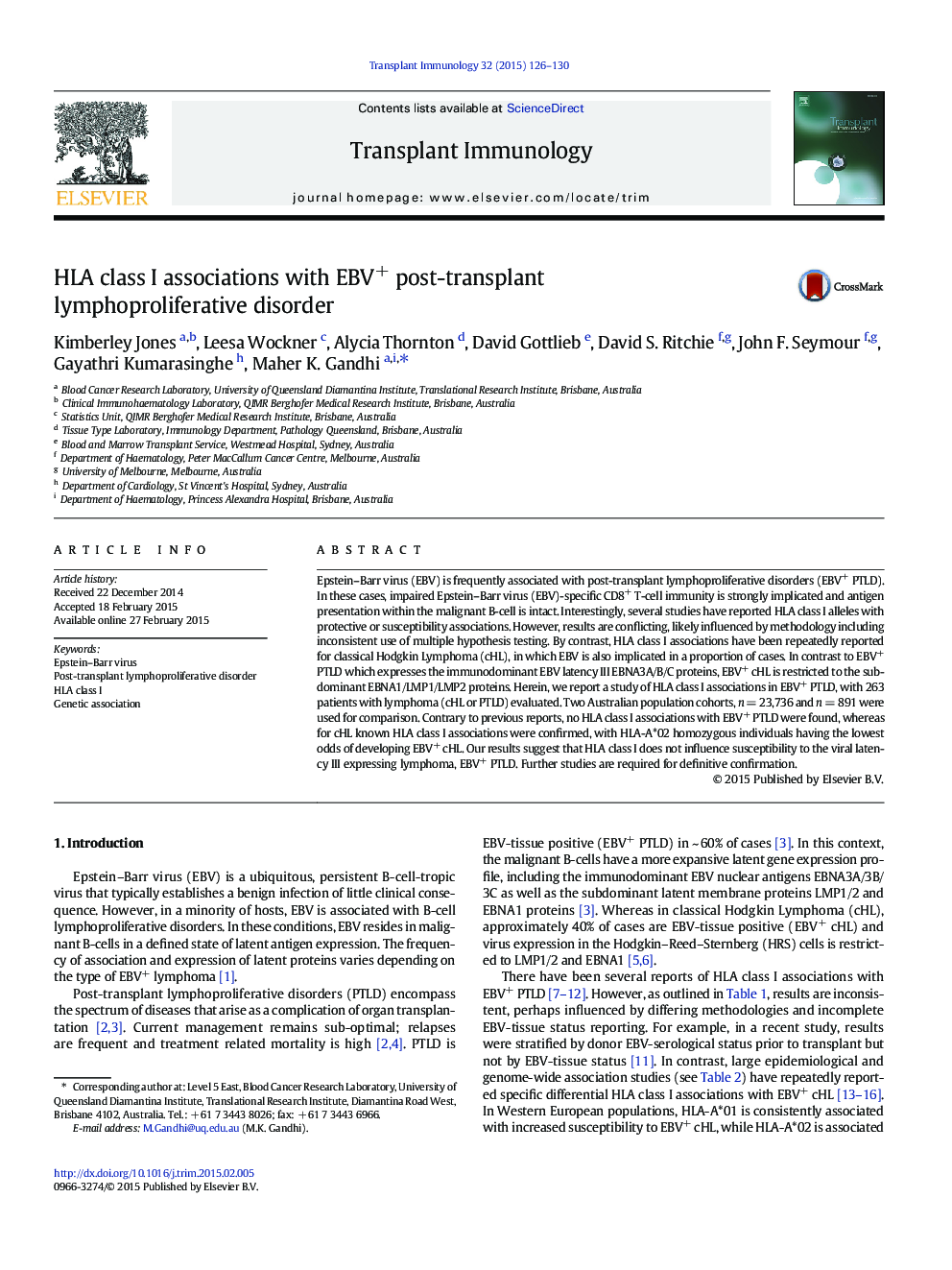| Article ID | Journal | Published Year | Pages | File Type |
|---|---|---|---|---|
| 3392065 | Transplant Immunology | 2015 | 5 Pages |
•HLA class I alleles have been associated with EBV+ PTLD•Diverse alleles were previously implicated with protection or susceptibility•Results of previous studies were inconsistent•Using the largest EBV+ PTLD cohort to date, no HLA class I associations were found•Our results suggest that HLA class I does not influence susceptibility to EBV+ PTLD
Epstein–Barr virus (EBV) is frequently associated with post-transplant lymphoproliferative disorders (EBV+ PTLD). In these cases, impaired Epstein–Barr virus (EBV)-specific CD8+ T-cell immunity is strongly implicated and antigen presentation within the malignant B-cell is intact. Interestingly, several studies have reported HLA class I alleles with protective or susceptibility associations. However, results are conflicting, likely influenced by methodology including inconsistent use of multiple hypothesis testing. By contrast, HLA class I associations have been repeatedly reported for classical Hodgkin Lymphoma (cHL), in which EBV is also implicated in a proportion of cases. In contrast to EBV+ PTLD which expresses the immunodominant EBV latency III EBNA3A/B/C proteins, EBV+ cHL is restricted to the subdominant EBNA1/LMP1/LMP2 proteins. Herein, we report a study of HLA class I associations in EBV+ PTLD, with 263 patients with lymphoma (cHL or PTLD) evaluated. Two Australian population cohorts, n = 23,736 and n = 891 were used for comparison. Contrary to previous reports, no HLA class I associations with EBV+ PTLD were found, whereas for cHL known HLA class I associations were confirmed, with HLA-A*02 homozygous individuals having the lowest odds of developing EBV+ cHL. Our results suggest that HLA class I does not influence susceptibility to the viral latency III expressing lymphoma, EBV+ PTLD. Further studies are required for definitive confirmation.
